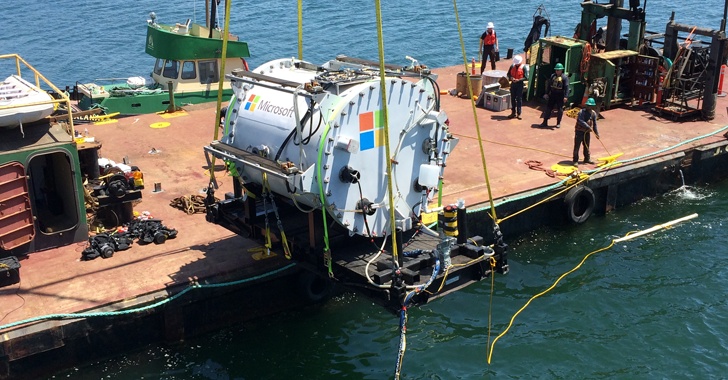Microsoft has brought its Project Natick data center back to land, after running the small system off the coast of Scotland’s Orkney Islands for two years. Natick is a codename used by Microsoft for the research of the undersea datacenter.
Where tech companies like Facebook and Google prefer to move their data centers to colder countries to reduce their air conditioning bill, Microsoft has come up with an even better home for data centers while cutting high energy costs for cooling them: Under the Sea.
Here’s what Microsoft says:
“50% of us live near the coast. Why doesn’t our data?”
What is Project Natick?
- Project Natick is a research project to build an underwater datacenter. Microsoft is investigating the numerous potential benefits that a standard, manufacturable, deployable undersea datacenter could provide to cloud users all over the world.

- The Natick Phase 1 vessel was operated on the seafloor approximately one kilometer off the Pacific coast of the United States from August to November of 2015.
- Phase 2 of Natick aims to demonstrate that we can economically manufacture full scale undersea datacenter modules and deploy them in under 90 days from decision to power on. The Phase 2 vessel was deployed at the European Marine Energy Centre located in the Orkney Islands, UK in June of 2018.
- Project Natick reflects Microsoft’s ongoing quest for cloud datacenter solutions that offer less resource-intensive options, rapid provisioning, lower costs, and high agility in meeting customer needs.
Project Natick is focused on a cloud future that can help better serve customers in areas which are near large bodies of water (where nearly 50% of society resides). The vision of operating containerized datacenters offshore near major population centers anticipates a highly interactive future requiring data resources located close to users. Deepwater deployment offers ready access to cooling and a controlled environment, and has the potential to be powered by co-located renewable power sources.
How are Natick datacenters powered?
For this Phase 2 deployment, the Natick datacenter is connected to the Orkney power grid in Scotland. The Orkney Islands produce enough renewable energy to power the islands, and feed the remaining renewable energy back to the main Scottish power grid. This renewable energy is a mix of off-shore wave and tide, and on-shore wind and solar.

The data center featured 864 servers and 27.6 petabytes of storage in a cylinder filled with unreactive nitrogen gas and was tethered to land by a cable that provided both a fibre connection and power.
The deployment was Microsoft’s second trial run of underwater data centers, having submerged a smaller system for three months back in 2016.
Next, Microsoft plans to study why the Natick servers proved eight times more reliable than those in a replica set up on land – with stable temperatures, no oxygen corrosion, and a lack of people to bump and jostle components thought to be the reason.
Some of the findings may help inform data center construction on land, the company said. It also will take lessons on renewability from the project’s successful deployment, with Natick relying on wind, solar, and experimental tidal technologies.
To know More : https://natick.research.microsoft.com/
